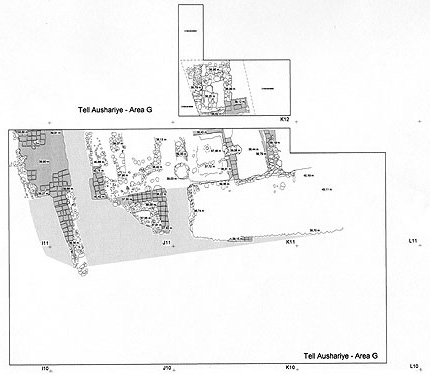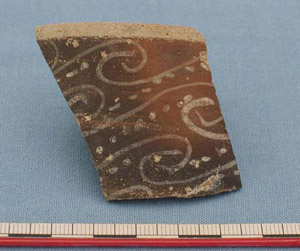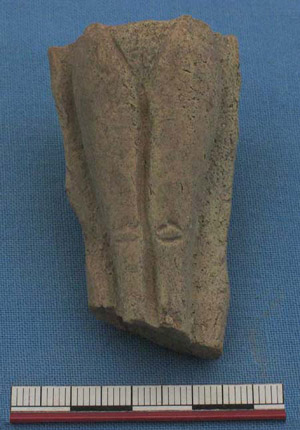The Late Bronze Age (1600-1200 BC)
During the Late Bronze Age the Karkemish region and the Syrian Euphrates was focus for conflicts between the great powers of the time: the Hittite empire in Anatolia, the Mitanni kingdom of Upper Mesopotamia, and interventions from Egypt, which controlled parts of the Levant.
The earliest level of this period in Aushariye (in Area G) is built directly on top of the burnt rooms of Level VI. Apparently the ruins were cut down and the old walls used as foundations for new houses. The finds show that this level (V) dates to the early part of the period when the region formed part of the Hurrian Mitanni kingdom.

Plan of Area G with the ruins of Levels VI-V (flanked by the Middle Bronze Age terrace, on top of which are preserved remains of brickwork from the Iron Age, probably Level III).
Larger image »

Rim sherd from cup with painted decoration (so-called
“Nuzi Ware”, named after a type site in northern Iraq),
typical of the Late Bronze Age.

Fragment of bronze tube with perforations. Such tubes
were bottom strainers for straws used to drink wine or
beer. The strainer prevented insects or impurities in
the drink from entering the straw.

Fragment of terracotta figure of a naked woman. The
exact purpose of such figurines is unknown, but the
most likely theory connnects them with rituals for
healing or similar, after which use they were discarded.
Above Level V is another Late Bronze Age level, but unfortunately it is badly preserved, and as yet difficult to date with precision. This level (IV) is followed directly by an early Iron Age level, but possibly the sequence in Area G, much exposed to erosion, is not complete.
